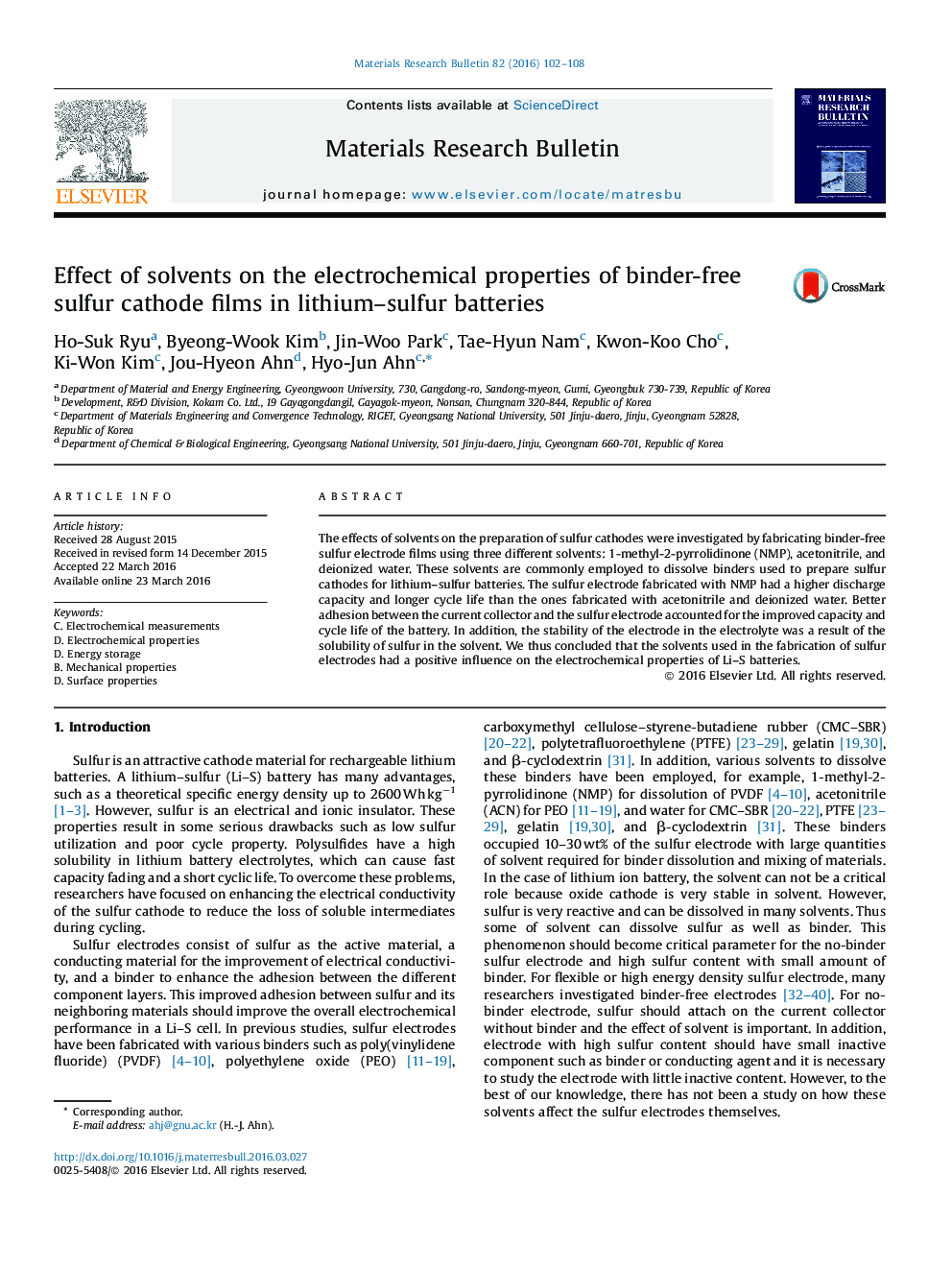| Article ID | Journal | Published Year | Pages | File Type |
|---|---|---|---|---|
| 1486987 | Materials Research Bulletin | 2016 | 7 Pages |
•The binder-free sulfur electrode with high sulfur contents of 75 wt.% was fabricated.•The binder-free sulfur electrode using NMP solvents showed 784 mAh g−1 after 40 cycles.•The solvent affect the electrochemical properties of binder-free sulfur electrode films.
The effects of solvents on the preparation of sulfur cathodes were investigated by fabricating binder-free sulfur electrode films using three different solvents: 1-methyl-2-pyrrolidinone (NMP), acetonitrile, and deionized water. These solvents are commonly employed to dissolve binders used to prepare sulfur cathodes for lithium–sulfur batteries. The sulfur electrode fabricated with NMP had a higher discharge capacity and longer cycle life than the ones fabricated with acetonitrile and deionized water. Better adhesion between the current collector and the sulfur electrode accounted for the improved capacity and cycle life of the battery. In addition, the stability of the electrode in the electrolyte was a result of the solubility of sulfur in the solvent. We thus concluded that the solvents used in the fabrication of sulfur electrodes had a positive influence on the electrochemical properties of Li–S batteries.
Graphical abstractFigure optionsDownload full-size imageDownload as PowerPoint slide
